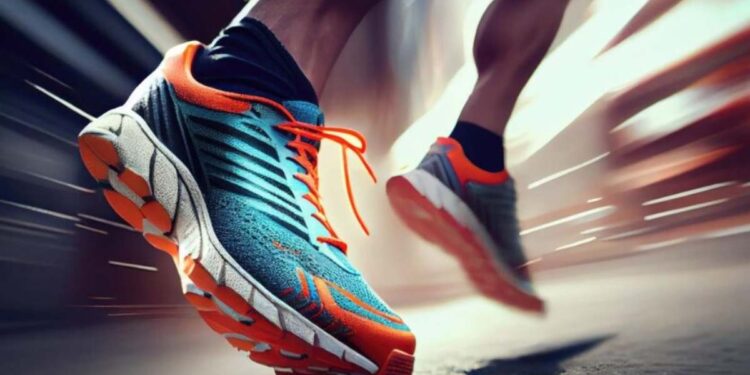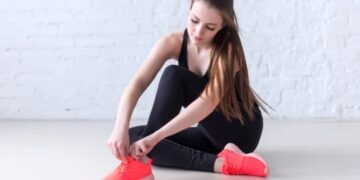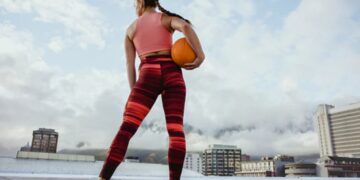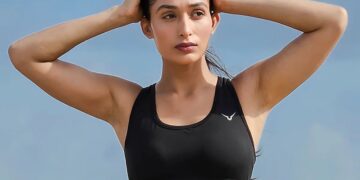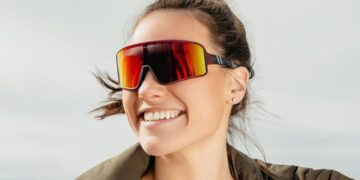As someone who loves staying active, I can’t stress enough how important the right pair of sports shoes is. Whether you’re hitting the gym, going for a run, or playing your favorite sport, your footwear plays a vital role in your performance and comfort. In this guide, I’ll share everything you need to know about sports shoes, helping you find the perfect pair for your unique needs.
Why Sports Shoes Matter
Imagine this: you’re all geared up for your workout, excited to push your limits, but as soon as you take a few steps, your shoes start to pinch or make your feet ache. Frustrating, right? Sports shoes are specifically designed to support your feet during various activities. They offer the right balance of comfort, stability, and style. Let’s explore why investing in quality sports shoes is a game-changer.
The Impact on Performance
The right shoes can enhance your athletic performance. Wearing shoes that are suited for your activity helps prevent injuries and supports your movements. Whether you’re sprinting on a track or jumping for a basketball hoop, specialized footwear ensures that your feet have the proper support and cushioning.
Comfort is Key
Comfort can make or break your workout. Ill-fitting shoes can lead to blisters, calluses, and even long-term foot issues. Investing in sports shoes that fit well can make your workouts more enjoyable and less painful. Plus, when your feet feel good, you’re more likely to stay motivated!
Style and Confidence
Let’s be honest: we all want to look good while we’re sweating it out. Sports shoes come in a variety of styles, colors, and designs, allowing you to express your personal style. A great pair of shoes can boost your confidence and make you feel empowered, whether you’re in the gym or on the track.
Types of Sports Shoes
Not all sports shoes are created equal. Different activities require different types of shoes to provide the best support and performance. Here’s a breakdown of the most common types of sports shoes:
1. Running Shoes
Running shoes are designed to provide cushioning and support for forward motion. They typically feature a lightweight construction and ample cushioning to absorb impact. Whether you’re a casual jogger or training for a marathon, the right running shoes can enhance your performance and reduce the risk of injury.
Key Features of Running Shoes
- Cushioning: Ample cushioning helps absorb the impact of running, reducing stress on your joints.
- Lightweight Design: Most running shoes are designed to be lightweight, allowing for quicker movement.
- Breathability: Many running shoes have mesh uppers for improved ventilation, keeping your feet cool and dry.
2. Basketball Shoes
Basketball shoes are crafted for the dynamic movements of the game—quick lateral movements, jumps, and hard stops. They often come with ankle support and a sturdy sole to provide traction on the court. The design also usually emphasizes style, allowing you to make a fashion statement while you play.
Key Features of Basketball Shoes
- Ankle Support: High-top designs provide extra support to prevent ankle injuries.
- Traction: The outsoles are designed for maximum grip on the court.
- Durability: Made to withstand the wear and tear of the game.
3. Training Shoes
Training shoes are versatile and suitable for various activities, from weightlifting to high-intensity interval training (HIIT). They offer a balance of stability and flexibility, allowing for quick movements and support during different exercises. If your workouts include a mix of cardio and strength training, these shoes are a great choice.
Key Features of Training Shoes
- Stability: Designed to support lateral movements and sudden changes in direction.
- Flexibility: Allow for a natural range of motion during workouts.
- Cushioning: Provides comfort without sacrificing stability.
4. Cross-Training Shoes
Similar to training shoes, cross-training shoes are designed for those who participate in multiple activities. They provide a blend of cushioning, stability, and flexibility, making them ideal for circuit training or group classes. If you enjoy trying out different workouts, cross-training shoes are versatile enough to keep up.
Key Features of Cross-Training Shoes
- Versatility: Suitable for a variety of workouts, from running to weightlifting.
- Balanced Cushioning: Offers enough support for different activities without being overly cushioned.
- Durability: Built to withstand diverse training routines.
5. Lifestyle Sneakers
While not specifically designed for sports, lifestyle sneakers combine comfort and style for everyday wear. They often incorporate trendy designs and materials, making them suitable for casual outings. If you’re looking for shoes that transition from the gym to brunch, lifestyle sneakers are a great option.
Key Features of Lifestyle Sneakers
- Style: Trendy designs that can be worn in casual settings.
- Comfort: Focus on comfort for all-day wear.
- Versatility: Suitable for various occasions, not just workouts.
Key Features to Consider
When shopping for sports shoes, there are several features to keep in mind. Here’s what to look for:
1. Fit and Comfort
The right fit is essential. Your sports shoes should feel snug but not too tight. Make sure to try them on with the type of socks you’ll wear during your activity. Pay attention to how they feel around your heel and arch. Comfort should always be a priority, especially if you plan to wear them for long periods.
2. Support and Stability
Different activities require varying levels of support. For example, running shoes often have more cushioning to absorb impact, while training shoes might offer more stability for lateral movements. Consider what type of support your feet need based on your activities.
3. Cushioning
Cushioning plays a critical role in absorbing shock and providing comfort. Some runners prefer a plush feel, while others may opt for a firmer ride. Test out different levels of cushioning to see what feels best for you.
4. Durability
Look for shoes made from high-quality materials that can withstand wear and tear. Depending on how often you exercise, you’ll want a pair that can last through countless workouts and miles.
5. Breathability
Your feet can get hot and sweaty, especially during intense workouts. Look for shoes with breathable materials to keep your feet cool and dry. Mesh uppers are a popular choice for their ventilation.
How to Choose the Right Sports Shoes
Choosing the right sports shoes can feel overwhelming, but breaking it down into steps can help. Here’s how to find your perfect pair:
1. Identify Your Activity
Start by considering what activities you’ll primarily use the shoes for. Are you a dedicated runner, or do you mix it up with different workouts? Knowing your primary activity will guide your shoe choice.
2. Get Fitted Properly
Visiting a specialty running or sports store can be beneficial. The staff can analyze your gait and foot type, helping you find shoes that match your needs. Many stores offer a fitting service, allowing you to walk or run on a treadmill to find the best fit.
3. Consider Your Foot Type
Understanding your foot type is crucial for finding the right shoes. Here are three common foot types:
- Neutral Feet: If your arches are moderate and your feet are aligned, you can wear a wide range of shoes.
- Flat Feet: If you have low arches, look for shoes with extra support and stability to prevent overpronation.
- High Arches: If you have high arches, opt for shoes with more cushioning to absorb shock.
4. Test Them Out
Once you’ve narrowed down your options, take the shoes for a test run—literally! Walk or jog around the store to see how they feel. Make sure there’s enough room for your toes to move, and check for any discomfort.
5. Don’t Forget Style
While performance is key, don’t overlook style! Choose a pair that reflects your personality and makes you excited to wear them. After all, looking good can boost your confidence during workouts.
Maintaining Your Sports Shoes
Once you’ve found the perfect pair of sports shoes, taking care of them will extend their lifespan. Here are some maintenance tips:
1. Clean Them Regularly
Remove dirt and debris after each use. A damp cloth or soft brush can help keep them looking fresh. If they’re machine washable, follow the manufacturer’s instructions for cleaning.
2. Air Them Out
After a workout, let your shoes breathe by removing the insoles and leaving them to air dry. This helps prevent odor buildup and maintains the integrity of the materials.
3. Rotate Pairs
If you exercise frequently, consider having multiple pairs. Rotating them can reduce wear and tear on any one pair, allowing each to last longer.
4. Replace When Needed
Pay attention to signs of wear. If your shoes lose their cushioning or support, it’s time to replace them. Running shoes typically last between 300 to 500 miles, while training shoes may last longer depending on usage.
Popular Brands to Consider
When it comes to sports shoes, several brands stand out for their quality and innovation. Here are some popular choices:
1. Nike
Known for their cutting-edge technology and stylish designs, Nike offers a wide range of shoes for various sports. Their running shoes, such as the Air Zoom series, are especially popular.
2. Adidas
Adidas is renowned for their comfort and performance, particularly in running and lifestyle sneakers. Their Boost technology provides excellent cushioning, making them a favorite among runners.
3. Asics
Asics specializes in running shoes and is celebrated for their Gel technology, which provides exceptional shock absorption. They’re a great choice for those who prioritize comfort and support.
4. New Balance
New Balance offers a variety of widths and sizes, making them a go-to for those with specific fit needs. Their shoes are often praised for their comfort and durability.
5. Brooks
Brooks is dedicated to running shoes, focusing on providing support and cushioning. Their Ghost and Adrenaline series are particularly popular among runners.
The Future of Sports Shoes
As technology advances, the world of sports shoes continues to evolve. Innovations like 3D printing, smart shoes with built-in sensors, and sustainable materials are shaping the future of athletic footwear. Keep an eye out for these trends as they emerge!
Conclusion
Finding the right sports shoes can significantly impact your performance and enjoyment during workouts. By understanding the different types of shoes, their features, and how to choose the right pair for your needs, you’ll be well-equipped to make an informed decision.
Remember, investing in quality footwear is not just about comfort; it’s about enhancing your overall fitness journey. So go ahead, find that perfect pair of sports shoes, and take your workouts to the next level. Your feet will thank you!


